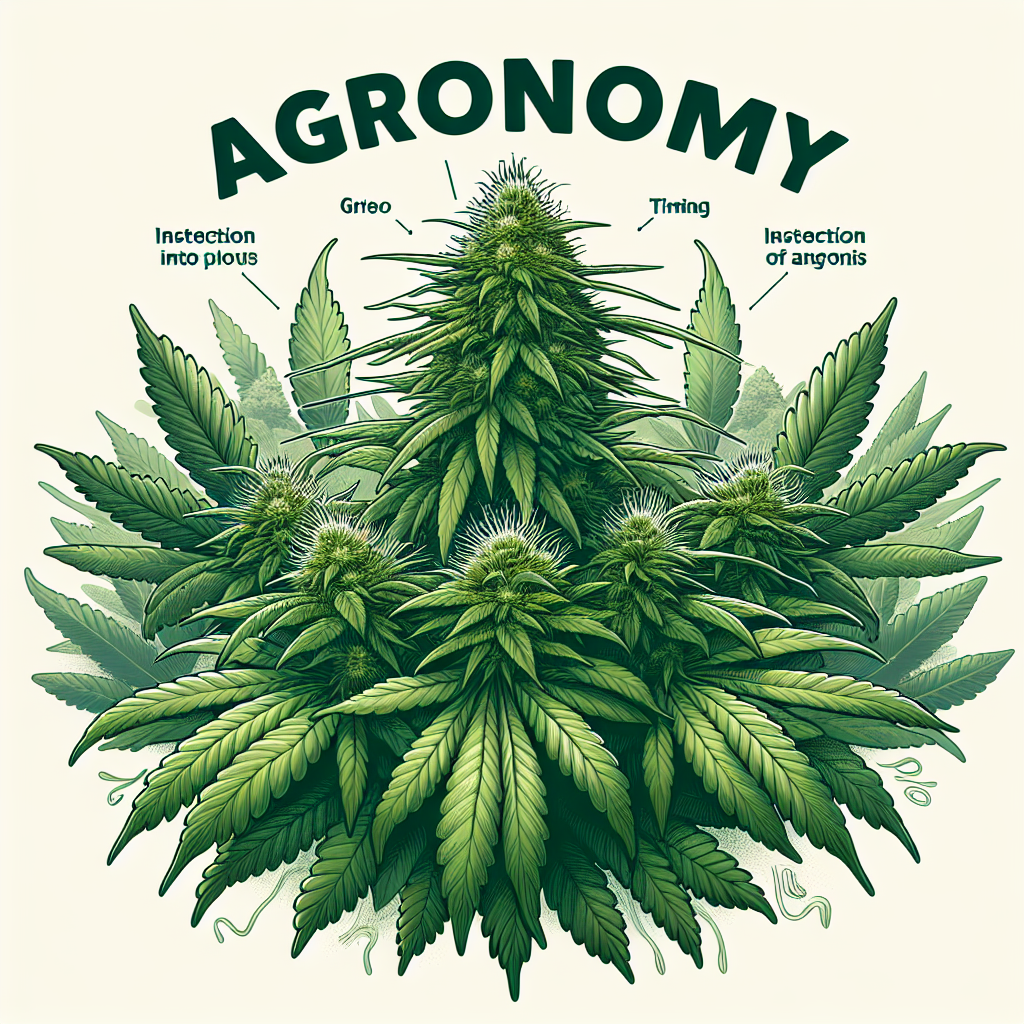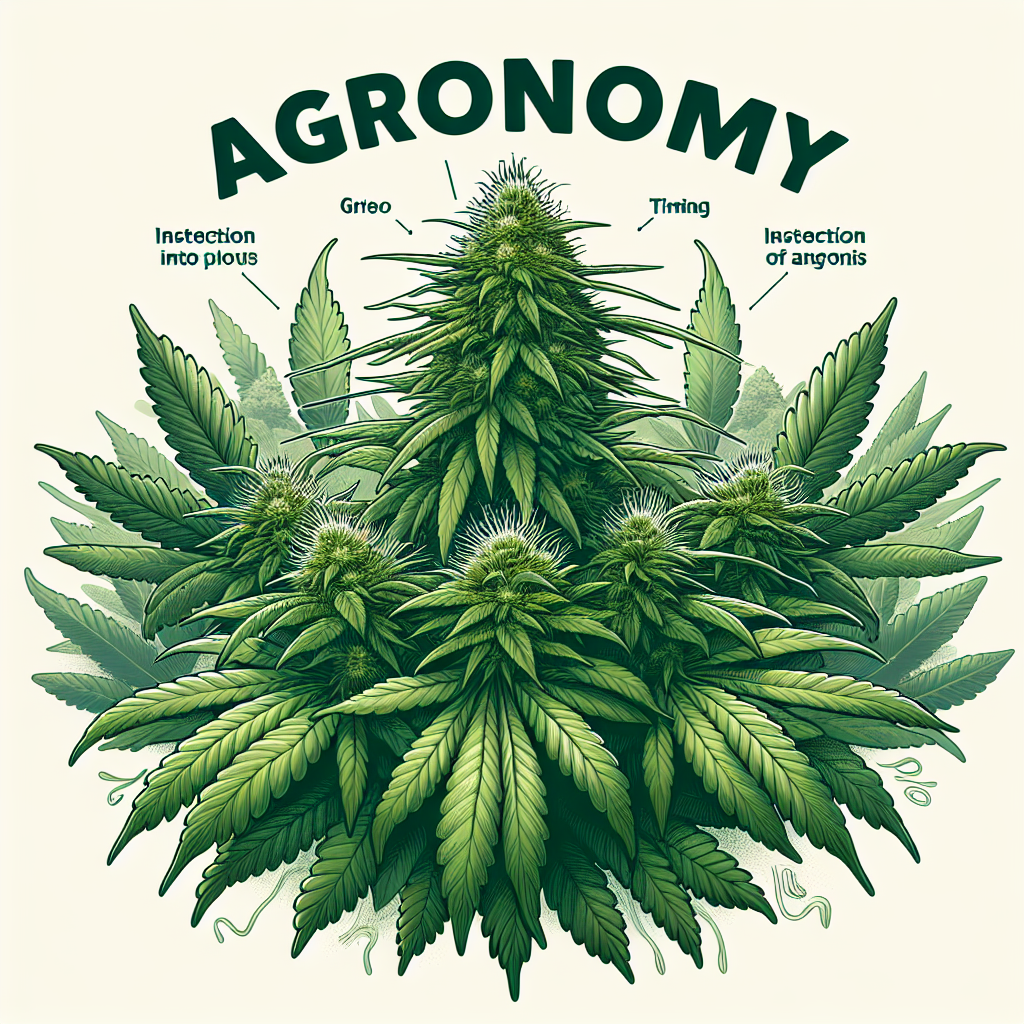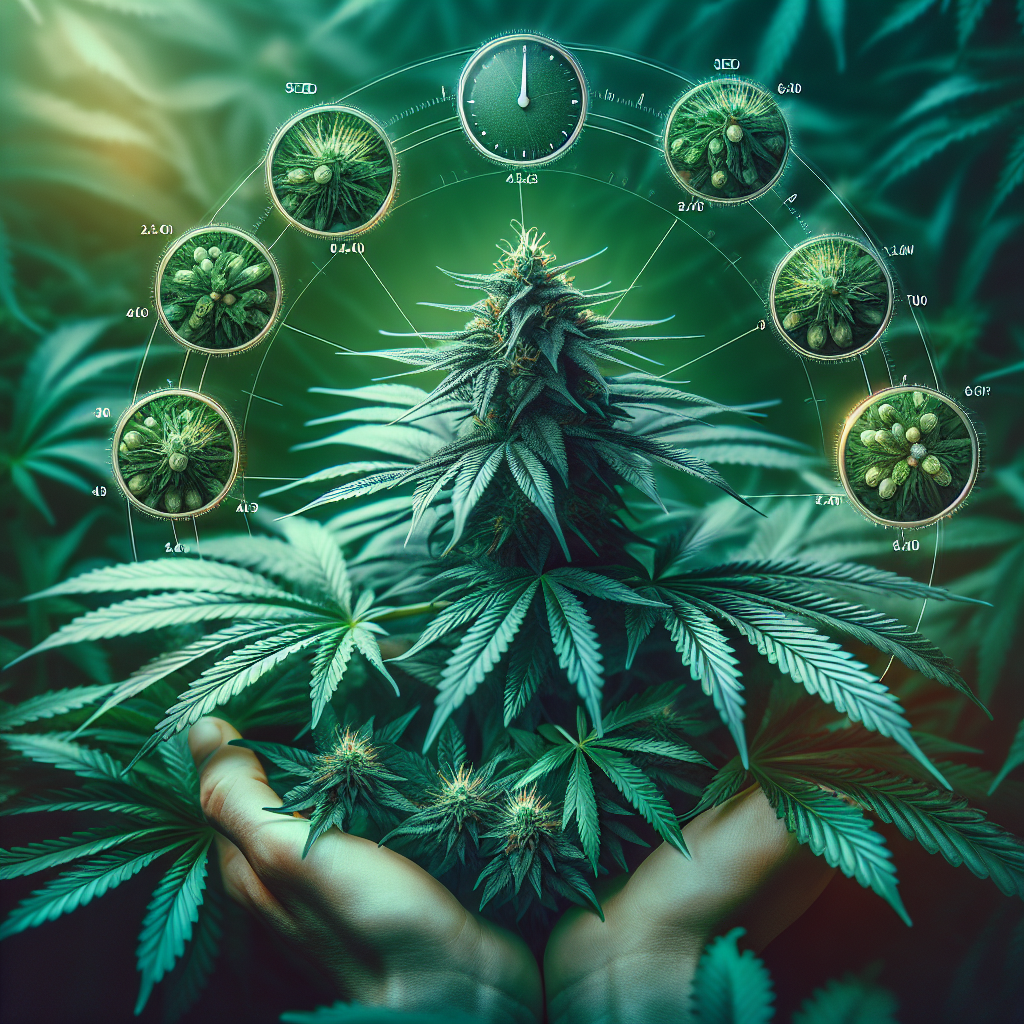Seed To Harvest Time For Cannabis

Seed To Harvest Time For Cannabis. Growing cannabis from seed to harvest requires careful planning and patience. Understanding the time it takes for cannabis plants to mature is essential for any aspiring cultivator. From germination to flowering, each stage has its own unique timeline, and knowing these growth phases will help you optimize your growing process. In this article, we will explore the different stages of cannabis growth and provide you with a comprehensive overview of the seed to harvest time for cannabis plants. So grab your gardening gloves and let’s embark on this green journey together!
Germination
Germination Process
Germination is the first crucial step in the life cycle of a cannabis plant. It is the process by which a seed transforms into a young plant and begins to grow. During germination, the seed absorbs water and swells, which activates enzymes that break down stored energy in the seed. This energy is used to fuel the growth of the plant’s roots, stems, and leaves. It is important to provide the right conditions for germination, including proper moisture levels, temperature, and oxygen.
Germination Timeline
The germination timeline for cannabis seeds can vary depending on various factors such as strain, environmental conditions, and seed quality. Typically, germination takes anywhere from 2 to 7 days. However, it is not uncommon for some seeds to take up to 10 days to sprout. It is essential to monitor the seeds closely during this stage to ensure they receive proper care and attention.
Germination Techniques
There are several techniques you can use to germinate cannabis seeds. One common method is the paper towel method, where you place the seeds between moist paper towels and cover them to maintain humidity. Another popular technique is using starter cubes or peat pellets in a seedling tray. These cubes or pellets provide an ideal environment for the seeds to sprout and develop roots. Regardless of the method you choose, it is important to keep the seeds warm and moist but not soaked in water. This will encourage successful germination.
Vegetative Stage
Vegetative Stage Overview
The vegetative stage is a critical phase in the growth of a cannabis plant. During this stage, the plant focuses on developing its roots, stems, and leaves. It is the period where the plant grows in size and prepares itself for the flowering stage. The plant requires ample light, nutrients, and water to thrive during this stage.
Length of Vegetative Stage
The length of the vegetative stage can vary depending on factors such as strain, desired plant size, and growing conditions. On average, the vegetative stage lasts for 4 to 8 weeks. However, some growers prefer to extend this stage to allow the plant to grow larger, while others choose a shorter vegetative period for smaller plants.
Optimal Light Cycle
During the vegetative stage, cannabis plants require a minimum of 18 hours of light per day to promote healthy growth. Many growers opt for a 24-hour light cycle during this stage to maximize growth. However, providing a dark period of 6 hours per day can help mimic natural light conditions, which can be beneficial for the plant’s overall development.
Nutrients and Watering
Proper nutrition and watering are essential for the healthy growth of cannabis plants during the vegetative stage. Nitrogen-rich fertilizers are particularly important during this phase as they promote leaf and stem growth. It is important to monitor the pH levels of the soil or growing medium and adjust nutrient solutions accordingly. Additionally, ensuring proper drainage and avoiding overwatering will prevent root rot and other water-related issues.

Flowering Stage
Flowering Stage Overview
The flowering stage is the most anticipated phase in the cannabis growing process as it is during this stage that the plant develops buds. The plant redirects its energy towards flower production rather than vegetative growth. The flowers contain the highest concentration of cannabinoids, making this stage crucial for those aiming for potent and high-quality cannabis.
Length of Flowering Stage
The length of the flowering stage varies significantly depending on the strain being grown. On average, it takes approximately 8 to 10 weeks for cannabis plants to complete their flowering stage. However, some strains may have shorter or longer flowering periods. It is important to refer to the specific strain’s guidelines to determine the optimal flowering duration.
Light Cycle Adjustment
During the flowering stage, cannabis plants require a shift in the light cycle to stimulate bud production. Changing the light cycle to a 12-hour light and 12-hour dark schedule triggers flowering. It is crucial to maintain a consistent light cycle during this stage to avoid stressing the plants and disrupting flower development.
Nutrient Requirements
As the plants transition to the flowering stage, their nutrient requirements change. Cannabis plants in the flowering stage benefit from a diet rich in phosphorus and potassium, which helps promote healthy bud development. It is important to follow the manufacturer’s instructions and use bloom-specific fertilizers to provide the necessary nutrients for optimal flowering.
Temperature and Humidity Management
Proper temperature and humidity management are essential during the flowering stage to ensure healthy bud development and prevent mold or mildew growth. The ideal temperature range for flowering cannabis plants is between 68°F and 78°F (20°C to 25°C). Additionally, maintaining relative humidity levels between 40% and 50% helps prevent moisture-related issues.
Harvesting
Determining Harvest Time
Determining the right time to harvest your cannabis plants is crucial for achieving the desired potency and effects. Harvest time depends on several factors, including strain, desired effects, and personal preference. Monitoring the trichomes (the tiny resin glands on the flowers) is a common method used to determine harvest time. When the trichomes transition from a clear state to a milky or amber color, it indicates that the plant is ready for harvest.
Trimming and Pruning
After harvesting, the next step is trimming and pruning the buds to remove excess leaves and stems. This process is important for improving the appearance and quality of the final product. Trimming involves carefully removing the fan leaves, while pruning focuses on selectively removing smaller branches and buds that do not meet your desired standards.
Drying and Curing
Drying and curing are crucial steps that impact the final flavor, aroma, and potency of your cannabis buds. Drying involves hanging the trimmed buds upside down in a cool, dark, and ventilated space to remove excess moisture. Once the buds are dry, they can be transferred to airtight containers for the curing process. Curing allows the buds to continue drying slowly while also enhancing their flavors and aromas over time.
Harvest Yield
The harvest yield of your cannabis plants depends on various factors, including strain, growing conditions, and cultivation techniques. High-quality seeds, optimal growing conditions, and proper care throughout the plant’s life cycle will contribute to a higher yield. On average, a well-grown cannabis plant can yield anywhere from 0.5 to 1.5 grams of dried buds per watt of light.

Seed Genetics
Understanding Seed Genetics
Seed genetics play a crucial role in determining the characteristics and traits of your cannabis plants. Each strain has its unique genetic makeup, which influences factors such as plant structure, potency, aroma, and yield potential. Understanding the genetics of the seeds you are using allows you to make informed decisions regarding strain selection and cultivation techniques.
Choosing the Right Cannabis Strain
Choosing the right cannabis strain is essential to ensure a successful and satisfying growing experience. Factors to consider when selecting a strain include desired effects (e.g., relaxing, energizing), cultivation requirements (e.g., indoor, outdoor), and personal preferences regarding potency, aroma, and taste. Researching the characteristics of different strains and reading reviews can help you select a strain that suits your specific needs.
Swapping and Breeding Seeds
Seed swapping and breeding are exciting aspects of the cannabis cultivation community. Swapping seeds with fellow growers allows you to explore new strains and expand your genetic library. Breeding, on the other hand, involves selectively cross-pollinating plants to create new genetic combinations and potentially develop unique strains. Both activities require knowledge and expertise, so it is essential to research and understand the principles of genetics before attempting breeding or trading seeds.
Environmental Factors
Lighting Conditions
Lighting conditions play a crucial role in cannabis growth and development. For indoor growers, using high-quality grow lights that provide the appropriate spectrum and intensity is essential. During the vegetative stage, plants thrive under a combination of blue and white light, while the flowering stage benefits from red and orange spectrum. It is crucial to provide the right amount of light to ensure proper photosynthesis and avoid light stress.
Temperature and Humidity
Maintaining optimal temperature and humidity levels is vital for healthy cannabis plants. Aim for a temperature range between 70°F and 85°F (21°C to 29°C) during the vegetative stage and slightly lower during the flowering stage. Proper ventilation and air circulation help regulate temperature and prevent excess humidity. In terms of relative humidity, aim for levels between 40% and 60% during the vegetative stage and 40% to 50% during the flowering stage to prevent mold and mildew growth.
Air Circulation
Proper air circulation is essential for maintaining optimal growing conditions and preventing the buildup of stagnant air. Good ventilation helps strengthen stems, prevents heat stress, and reduces the risk of pests and diseases. Utilizing fans or other air circulation devices within the growing space ensures that fresh air reaches all parts of the plant, promoting healthy growth.
Indoor vs Outdoor Growing
Benefits of Indoor Growing
Indoor growing offers several advantages for cannabis cultivation. It allows for complete control over environmental factors such as light, temperature, and humidity. Additionally, indoor growing enables year-round cultivation, mitigating the limitations imposed by seasonal changes. Growing indoors also provides a higher level of security and privacy, which is essential in regions with strict cannabis regulations.
Challenges of Indoor Growing
Despite its advantages, indoor growing presents unique challenges. Setting up an indoor grow space can be costly, requiring investments in lighting, ventilation, and other equipment. Energy consumption is also a consideration for indoor growers. Additionally, maintaining a consistent environment indoors requires careful monitoring and adjustment of temperature, humidity, and air circulation.
Advantages of Outdoor Growing
Outdoor growing offers some distinct advantages. Natural sunlight provides a full spectrum of light, allowing plants to develop richer flavors and aromas. Outdoor cultivation also allows for larger crop sizes and potentially higher yields. Moreover, outdoor growing can be more cost-effective since it does not require extensive equipment and energy use.
Considerations for Outdoor Growing
When opting for outdoor growing, there are several considerations to keep in mind. Climate plays a significant role, as different strains thrive in different climates. Understanding your local climate and selecting strains accordingly is crucial for success. Pests and diseases are also more prevalent outdoors, so implementing proper pest management strategies is essential.
Alternative Growing Methods
Hydroponics
Hydroponics is a popular alternative growing method that involves growing plants in a soilless medium while providing all necessary nutrients through a nutrient-rich water solution. This method offers several benefits, including faster growth, increased control over nutrient levels, and reduced water consumption. However, it requires more technical knowledge and infrastructure compared to traditional soil-based cultivation.
Aeroponics
Aeroponics is a cutting-edge growing method that suspends the plant’s roots in a misting environment. Nutrient-rich water is sprayed onto the roots, providing them with the necessary nutrients. This method maximizes oxygen exposure to the roots, promoting rapid growth and increased nutrient uptake. Aeroponics requires specialized equipment but offers the advantage of faster growth rates and potentially higher yields.
Aquaponics
Aquaponics combines hydroponics with aquaculture, creating a symbiotic system where fish and plants coexist. In this method, fish waste provides the nutrients for the plants, while the plants’ roots filter the water, creating a clean and nutrient-rich environment for the fish. Aquaponics offers a sustainable and efficient way to grow cannabis while minimizing waste.
Pests and Diseases
Common Cannabis Pests
Cannabis plants can be susceptible to various pests, including aphids, spider mites, fungus gnats, and caterpillars. These pests can cause significant damage to the plants, affecting their growth and overall health. Regular inspection of the plants and implementing preventive measures such as maintaining a clean growing environment and practicing proper hygiene can help minimize pest infestations.
Prevention and Treatment
Preventing pest infestations is key to maintaining healthy cannabis plants. This can be achieved by implementing integrated pest management (IPM) techniques, including using beneficial insects, practicing crop rotation, and regularly inspecting plants for any signs of pests. If an infestation does occur, treatment methods such as organic insecticides, neem oil, or horticultural soaps can effectively control pests.
Identifying and Treating Diseases
Cannabis plants can also be affected by various diseases, including powdery mildew, gray mold, and root rot. Proper hygiene, maintaining optimal growing conditions, and avoiding overwatering can help prevent disease development. If diseases do occur, treating them promptly with appropriate fungicides or other treatments specifically designed for cannabis can help minimize damage and preserve plant health.
Legal Considerations
Understanding Cannabis Laws
Before engaging in cannabis cultivation, it is crucial to understand the legal regulations surrounding cannabis in your jurisdiction. Laws regarding cannabis cultivation and consumption vary significantly between countries, states, and even municipalities. Educate yourself on the specific laws and regulations in your area to ensure compliance and avoid any legal issues.
Growing Licensing and Regulations
In many regions, obtaining a license is necessary to legally cultivate cannabis. These licenses often require meeting specific criteria, such as security measures, record-keeping, and adherence to cultivation guidelines. It is important to research and obtain the necessary licenses and permits to ensure compliance with local regulations.
Compliance with Local Laws
Complying with local laws is essential for a successful and legal cannabis cultivation venture. This includes following guidelines related to plant quantity, cultivation methods, storage, transportation, and sale of cannabis products. Regularly staying informed about any changes in laws and regulations ensures ongoing compliance and a smooth cultivation process.
Conclusion Seed To Harvest Time For Cannabis
In conclusion, mastering the art of cannabis cultivation requires a comprehensive understanding of various stages, techniques, and environmental factors. From germination to harvesting and beyond, careful attention to each aspect of the plant’s life cycle will contribute to healthy growth and a successful yield. Remember to always comply with local laws and regulations and stay informed about the latest advancements in cultivation methods to optimize your cannabis growing experience. Happy growing!



